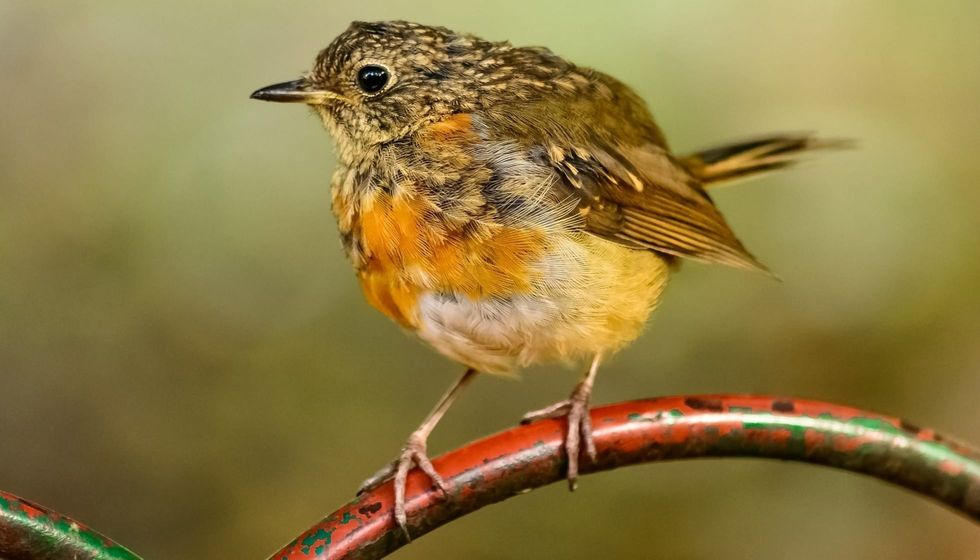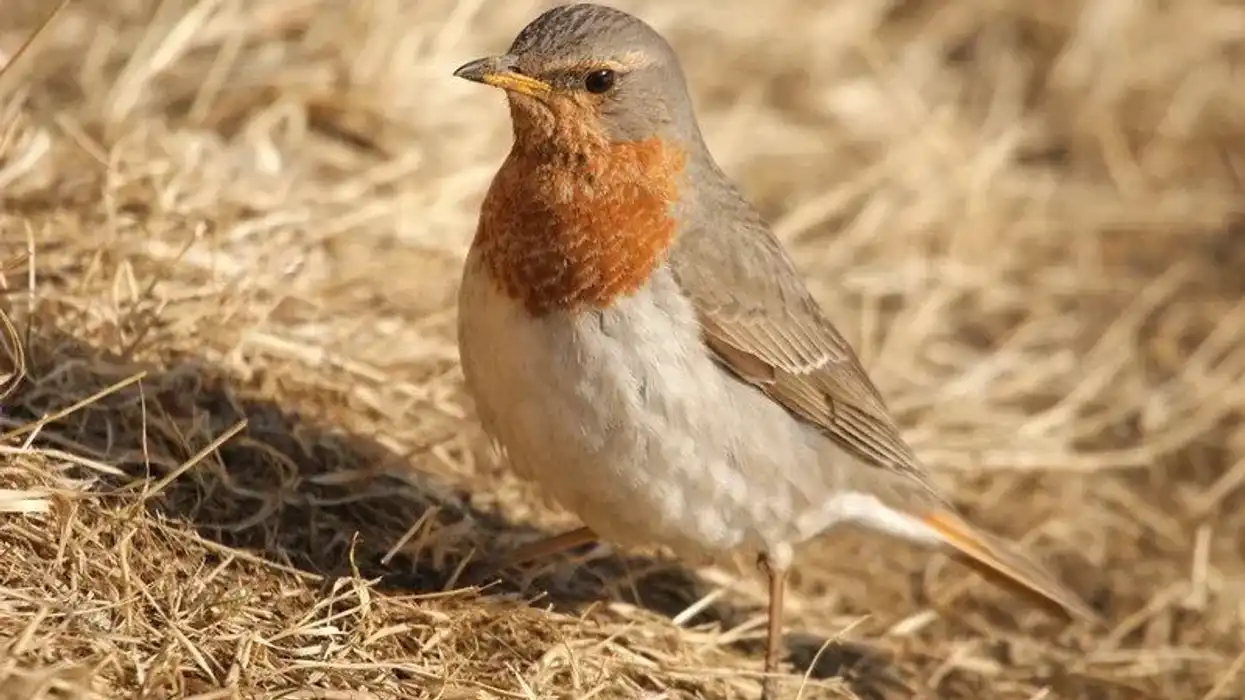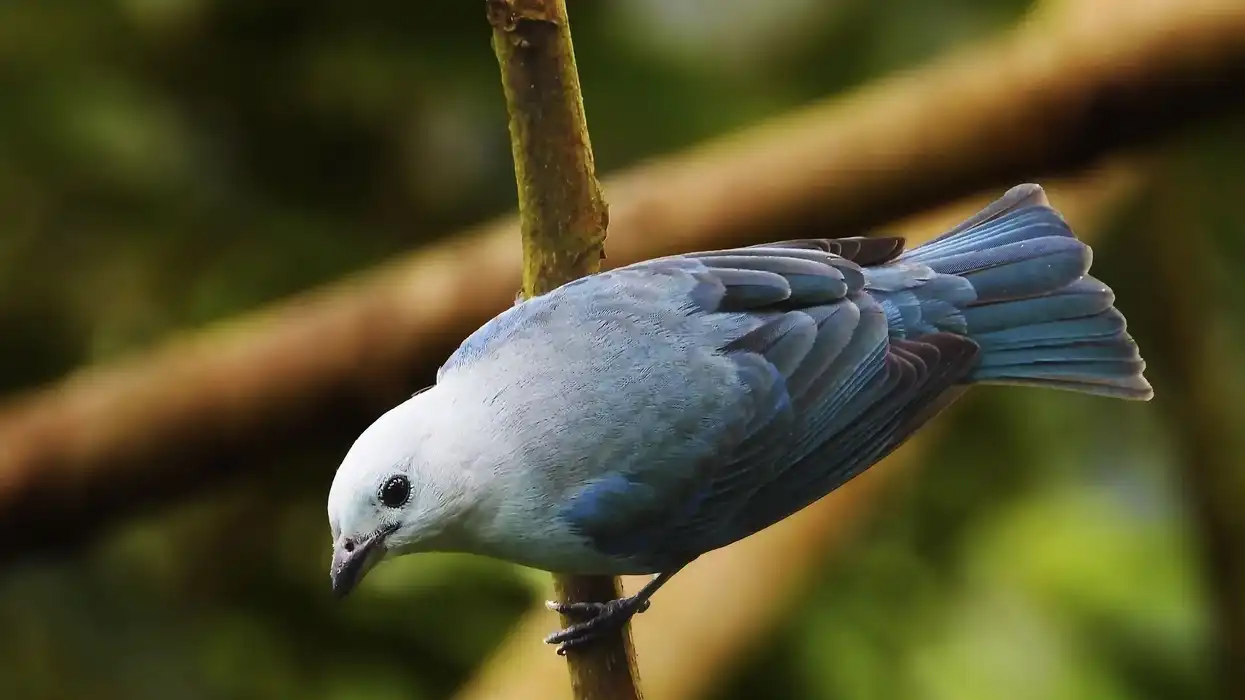Discovered around the year 1854 by Edgar Leopold Layard from Point Pedro of Sri Lanka, the brown breasted flycatcher(Muscicapa muttui) of genus Muscicapa, also known as Layard's Flycatcher, is a small songbird (passerine bird) in the flycatcher family Muscicapidae which also includes birds such as the great crested flycatcher, the vermilion flycatcher, the scissor tailed and the least flycatcher.
The brown-breasted flycatcher can be found in mid to high elevation broadleaf forests of Northeastern India, central and southern China, and northern Burma, and Thailand, and then they migrate to lowlands and foothills of Southern India and Sri Lanka during the winter season.
Like most species of the family Muscicapidae, these birds are small in size and may seem very similar to their family member, the Asian Brown Flycatcher.
The birds breed in Northeastern India, Central and Southern China and northern Burma and Thailand then migrate to South India and Sri Lanka. The brown-breasted flycatcher is known to live in isolation or in pairs during the mating season and feeds on insects such as beetles, flies, and butterflies.
It lays four to five eggs and they are incubated by both partners.
They eat insects such as butterflies, beetles, flies, and when on the ground it preys on earthworm ants and various insect larvae.
Read on to discover more!
Brown-Breasted Flycatcher Interesting Facts
What type of animal is a brown-breasted flycatcher?
The brown-breasted flycatcher is a bird.
What class of animal does a brown-breasted flycatcher belong to?
The brown-breasted flycatcher belongs to the class of Aves.
How many brown-breasted flycatchers are there in the world?
It's a very rare sight to spot this species of the genus Muscicapa. Therefore, the exact number of these birds is unknown.
Where does a brown-breasted flycatcher live?
The brown-breasted flycatcher of genus Muscicapa ranges from northeastern India, central and southern China, and northern Burma and Thailand.
What is a brown-breasted flycatcher's habitat?
This species of birds live at least about 19.7 ft (6 m) above ground, they build themselves a cup-shaped nest which is completely made up of moss and placed in dense bush, low tangled vegetation, or on a thick bark in broadleaf evergreen forests and winters in lowlands and foothills.
The brown-breasted flycatcher (Muscicpa muttui), like the many species of the flycatcher family, is very territorial and will only move from one place during its stay if it is disturbed.
Who do brown-breasted flycatchers live with?
The brown-breasted flycatcher (Muscicapa muttui) tends to live on its own in isolation and in pairs during the mating season and are very territorial birds like all other species of flycatchers.
How long does a brown-breasted flycatcher live?
The brown-breasted flycatcher survives for 2-10 years.
How do they reproduce?
The brown-breasted flycatcher breeds in broad evergreen forests and their breeding period lasts from April to June and is carried out in northeastern India, central and southern China, and northern Burma, and Thailand. It then migrates to Southern India and Sri Lanka during the winter. These birds lay one egg each day and clutch around four to five eggs.
What is their conservation status?
Although the conservation station of this bird given by the International Union For Conservation Of Nature (IUCN) is listed as Least Concern, the population graph of Layard's Flycatcher indicates that the population of this bird is declining.
Brown-Breasted Flycatcher Fun Facts
What do brown-breasted flycatchers look like?
The brown-breasted flycatcher (Muscicapa muttui) or the Layard's flycatcher is a small passerine bird with an olive-brown upper body with dark wings on the size and a dark tail, it has a prominent brown upper breast with a slightly less brown lower breast with a white belly and pale yellow feet.
It has big black eyes surrounded by a white eye-ring on each eye.
Although the bird may seem very similar to the Asian Flycatcher, its bill is bigger than that of the Asian Flycatcher and the legs are pale yellow in color in comparison to the ones on the Asian Brown Flycatcher that are dark in color.
How cute are they?
These birds are small in size with big black eyes and tiny feet and are considered very cute.
How do they communicate?
The brown-breasted flycatcher (Muscicapa muttui) is a very quiet bird. It makes a series of 'chi' sounds ending with 'chit chit.' (A phrase of brief whistles.)
How big is a brown-breasted flycatcher?
The brown-breasted flycatcher (Muscicapa Muttui) is 5-6 in (13-14 cm) in length which is more than twice as big as the world's smallest bird, the Bee Hummingbird
How fast can a brown-breasted flycatcher fly?
This bird is rare to find and the speed of this species in flight has not been recorded yet.
How much does a brown-breasted flycatcher weigh?
The brown-breasted flycatcher of genus Muscicapa weighs somewhere around 0.4-0.5 oz (10- 14 g).
What are the male and female names of the species?
The brown-breasted flycatcher has no specific names for the different sexes.
What would you call a baby brown-breasted flycatcher?
The baby or the juvenile of the birds of this species is called a chick.
What do they eat?
The brown-breasted flycatcher is an insectivore species. This species of birds are known to feed on beetles, butterflies, moths and flies, earthworms, insect larvae, earthworms. They are known to hunt till late at night which helps them prey on various kinds of insects that come out at night.
Are they friendly?
Yes, this species of bird is friendly in nature.
Would they make a good pet?
This species of birds will not make good pets because they migrate during the winters and they prefer to live in isolation.
Did you know...
Despite belonging to different sexes, the physical appearance (color and size) of both sexes of the species is the same. Also, both sexes incubate their eggs.
The brown-breasted flycatcher or Layard's flycatcher belongs to the Old World Flycatcher (the Muscicapidae) family which consists of 324 species of birds.
Edgar Leopold Layard, a naturalist and diplomat, named this bird (Muscicapa muttui) after Mutthu, who worked as a chef for him and also brought him the specimen.
While the diet of this particular bird is not very well known, it primarily feeds on insects while some other species of the flycatcher family include fruits and berries in their diet on a regular basis.
The brown-breasted flycatcher (Muscicapa muttui) tends to catch its prey mid-air and rarely descends to the surface to hunt its prey but when it does descend to the surface it eats ants, earthworms, and various insects' larvae. The ability to catch prey mid-air is very rare.
What is the call of the brown-breasted flycatcher?
When in close range, you can hear a faint 'tseet' or 'chi-chi-chi-chi' sound ending with 'chit-chit.' (A phrase of brief whistles.)
Do brown-breasted flycatchers migrate?
There is no scientific evidence that brown-breasted flycatchers (Muscicapa muttui) migrate but it is believed that they migrate from northeastern India, Central and Southern China, and northern Burma and Thailand to southern parts of India and Sri Lanka during the winter season.
Here at Kidadl, we have carefully created lots of interesting family-friendly animal facts for everyone to discover! Learn more about some other birds including the great crested flycatcher facts and scissor-tailed flycatcher fun facts pages.
You can even occupy yourself at home by coloring in one of our free printable Brown breasted flycatcher coloring pages!









